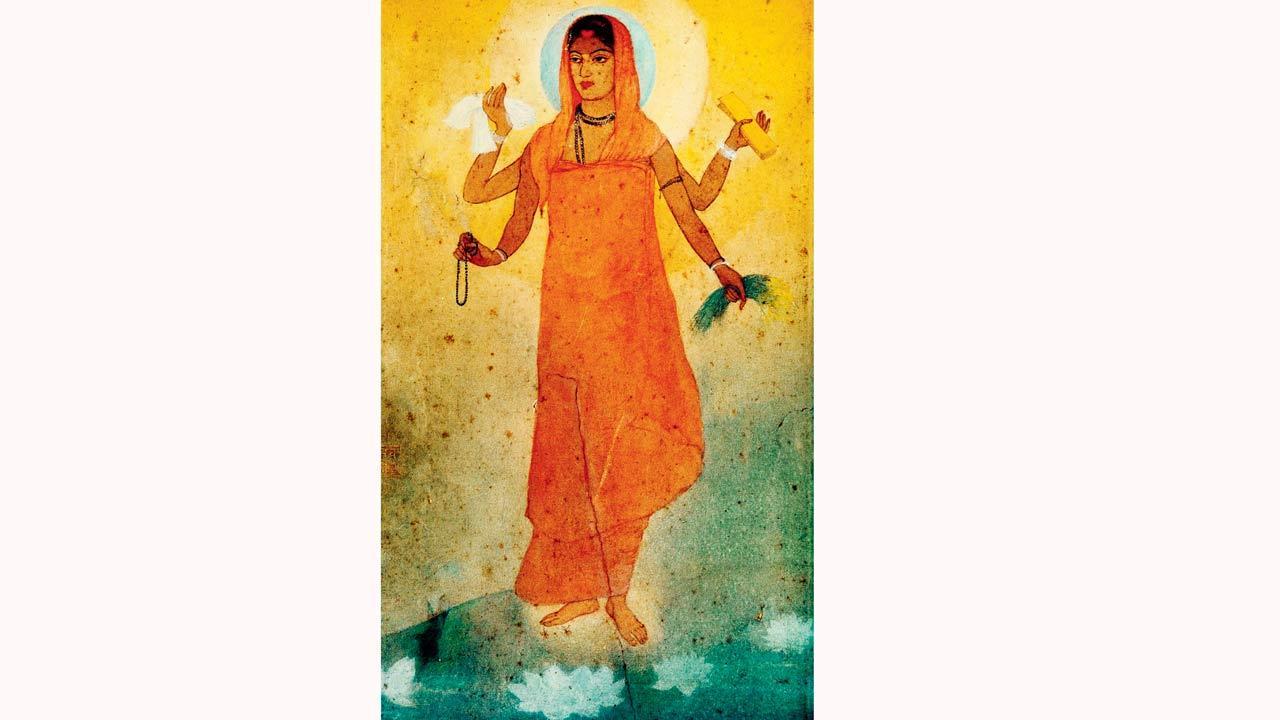Home / Sunday-mid-day / / Article /
Dazed and confused in India today
Updated On: 21 July, 2024 07:50 AM IST | Mumbai | Sucheta Chakraborty
Prayaag Akbar’s second novel offers a sharp portrait of young India reeling from the thrills, delusions and manipulations of a hectic digital landscape bandying concepts of nation and nationalism, AI and virality

This original 1905 painting of Bharat Mata by Abanindranath Tagore plays a key role in the crafting of a video clip that propels the story in Prayaag Akbar’s new novel. The painting is one of the earliest visualisations of ‘Mother India’, where she is depicted as a saffron-clad sadhvi holding a book, sheaves of paddy, a piece of white cloth and a rosary in her four hands. Pic/Wikimedia Commons
In Prayaag Akbar’s new novel Mother India (Fourth Estate, R499), a young man employed in a right-wing content creator’s dingy basement studio is assigned to work on a video clip intended to respond to a presumed threat to the nation from “PhD-waale. Jihadis. Khalistanis. Maoists and missionaries”. Referencing a famous 1905 portrait of Bharat Mata by Abanindranath Tagore and with some help from an AI app that morphs images of real women taken off the internet, he animates a representation of the figure of Bharat Mata imposed on the map of the country. Of these representations, Akbar writes in the book: “She stood with her feet together at the bottom of the peninsula, arms reaching out so that her body became the body of the nation. Her torso appeared over the Gangetic plain, the saree or sometimes her tresses flowing as the great river would. The haloed head and mysterious placid face were invariably positioned over the northern reaches: Kashmir.”
Akbar, who writes in the book’s Acknowledgements of encountering the concept of the “geo-body” in cultural historian Sumathi Ramaswamy’s The Goddess and the Nation: Mapping Mother India, tells mid-day, “I was drawn to the symbol of Mother India because it is such a deeply emotive symbol for so many of us. I find it very powerful myself: the appeal to our instinctual need to protect the mother—who can reject that call?”




